| Weight | 1 lbs |
|---|---|
| Dimensions | 9 × 5 × 2 in |
| host | mouse |
| isotype | IgG |
| clonality | monoclonal |
| concentration | concentrate, predilute |
| applications | IHC |
| reactivity | human |
| available size | 0.1 mL, 0.5 mL, 1 mL concentrated, 7 mL prediluted |
rabbit anti-PIT-1/POU1F1 monoclonal antibody (ZR440) 6335
Price range: $160.00 through $528.00
Antibody summary
- Rabbit monoclonal to PIT-1/POU1F1
- Suitable for: Immunohistochemistry (formalin-fixed, paraffin-embedded tissues)
- Reacts with: Human
- Isotype:IgG
- Control: Pituitary
- Visualization: Nucleus
- 0.1, 0.5, 1.0 mL concentrated, 7 mL prediluted
rabbit anti-PIT-1/POU1F1 monoclonal antibody ZR440 6335
| target relevance |
|---|
| Protein names Pituitary-specific positive transcription factor 1 (PIT-1) (Growth hormone factor 1) (GHF-1) |
| Gene names POU1F1,POU1F1 GHF1 PIT1 |
| Protein family POU transcription factor family, Class-1 subfamily |
| Mass 32912Da |
| Function FUNCTION: Transcription factor involved in the specification of the lactotrope, somatotrope, and thyrotrope phenotypes in the developing anterior pituitary. Specifically binds to the consensus sequence 5'-TAAAT-3'. Activates growth hormone and prolactin genes (PubMed:22010633, PubMed:26612202). {ECO:0000269|PubMed:22010633, ECO:0000269|PubMed:26612202}. |
| Subellular location SUBCELLULAR LOCATION: Nucleus {ECO:0000269|PubMed:26612202}. |
| Structure SUBUNIT: Interacts with PITX1 (PubMed:26612202). Interacts with LHX3 (PubMed:26612202). Interacts with ELK1 (PubMed:26612202). {ECO:0000269|PubMed:26612202}. |
| Domain DOMAIN: The 9aaTAD motif is a transactivation domain present in a large number of yeast and animal transcription factors. {ECO:0000269|PubMed:34342803}. |
| Involvement in disease DISEASE: Pituitary hormone deficiency, combined, 1 (CPHD1) [MIM:613038]: Combined pituitary hormone deficiency is defined as the impaired production of growth hormone and one or more of the other five anterior pituitary hormones. CPHD1 is characterized by pleiotropic deficiencies of growth hormone, prolactin and thyroid-stimulating hormone, while the production of adrenocorticotropic hormone, luteinizing hormone, and follicle-stimulating hormone are preserved. In infancy severe growth deficiency from birth as well as distinctive facial features with prominent forehead, marked midfacial hypoplasia with depressed nasal bridge, deep-set eyes, and a short nose with anteverted nostrils and hypoplastic pituitary gland by MRI examination can be seen. Some cases present with severe intellectual disability along with short stature. {ECO:0000269|PubMed:11297581, ECO:0000269|PubMed:1472057, ECO:0000269|PubMed:1509262, ECO:0000269|PubMed:1509263, ECO:0000269|PubMed:15928241, ECO:0000269|PubMed:16968807, ECO:0000269|PubMed:22010633, ECO:0000269|PubMed:26612202, ECO:0000269|PubMed:7852536, ECO:0000269|PubMed:8768831, ECO:0000269|PubMed:9485179, ECO:0000269|PubMed:9626142}. Note=The disease is caused by variants affecting the gene represented in this entry. |
| Target Relevance information above includes information from UniProt accession: P28069 |
| The UniProt Consortium |
Data
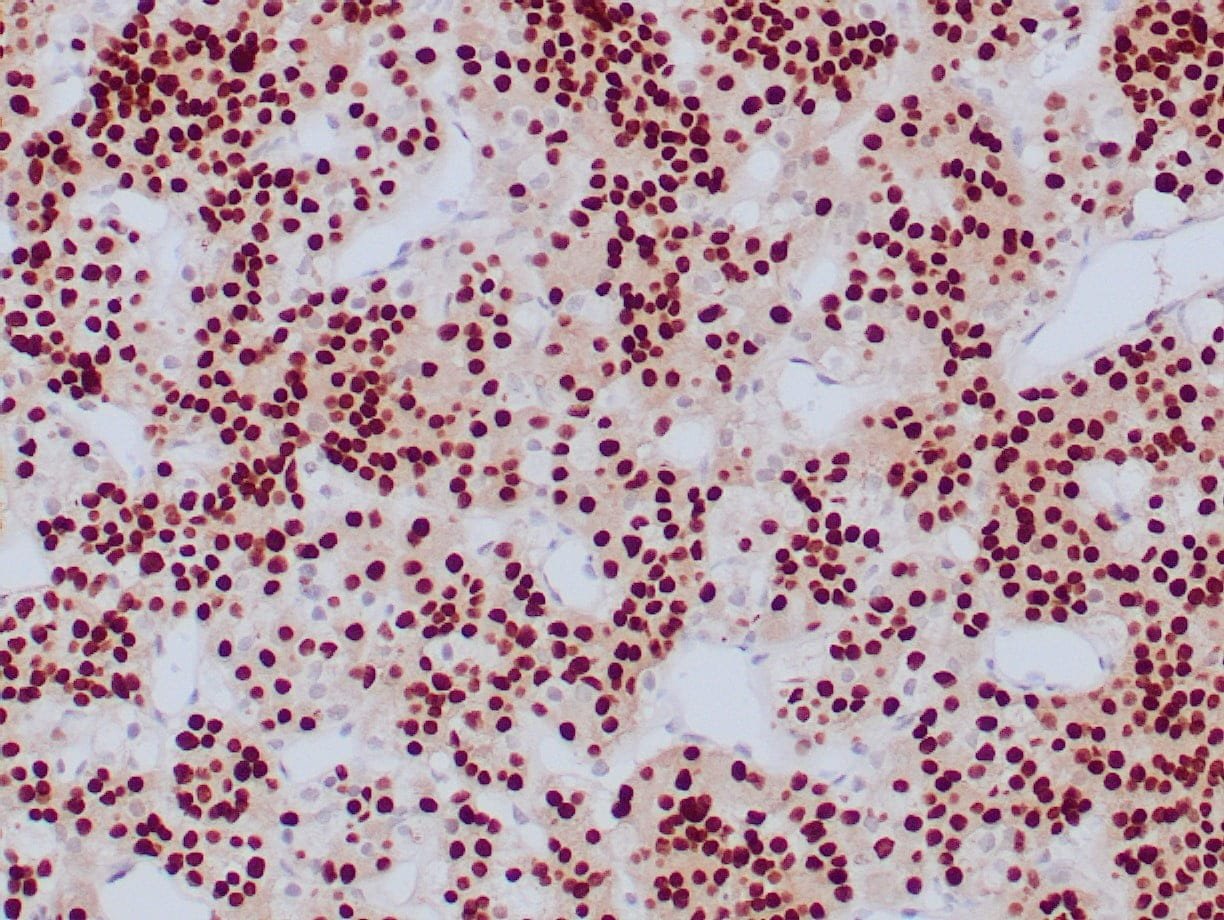 |
| Formalin-fixed, paraffin-embedded human pituitary stained with anti-PIT-1 antibody using peroxidase-conjugate and DAB chromogen. Note strong nuclear staining of glandular cells |
Publications
| pmid | title | authors | citation |
|---|---|---|---|
| We haven't added any publications to our database yet. | |||
Protocols
| relevant to this product |
|---|
| IHC |
Documents
| # | SDS | Certificate | |
|---|---|---|---|
| Please enter your product and batch number here to retrieve product datasheet, SDS, and QC information. | |||
Only logged in customers who have purchased this product may leave a review.

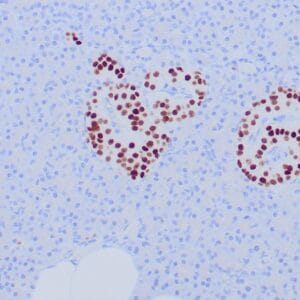
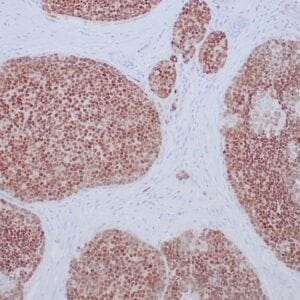
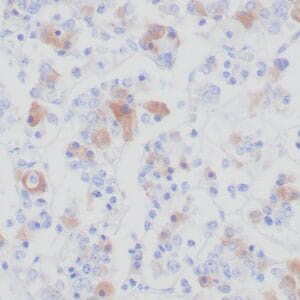
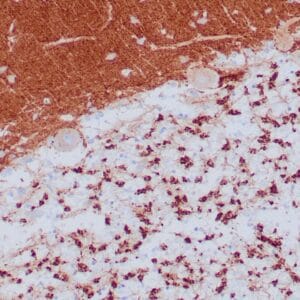
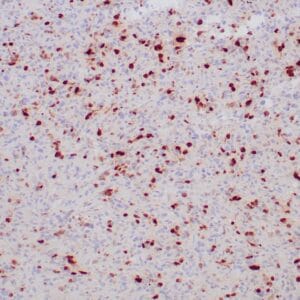

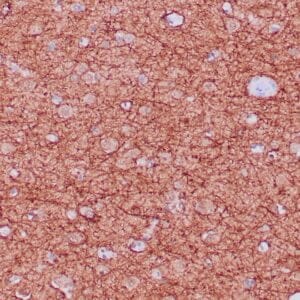
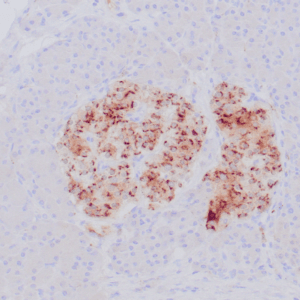
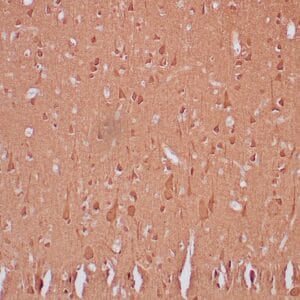
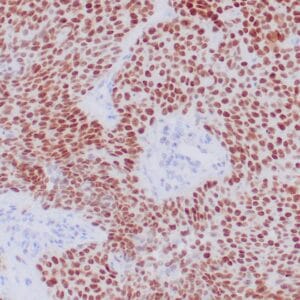
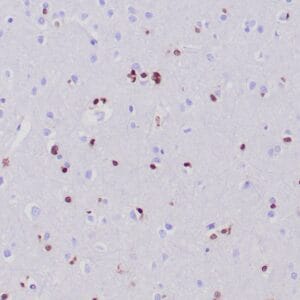
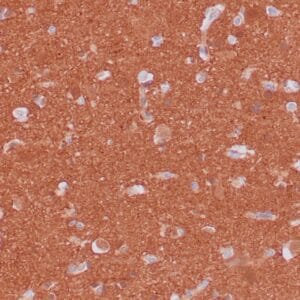
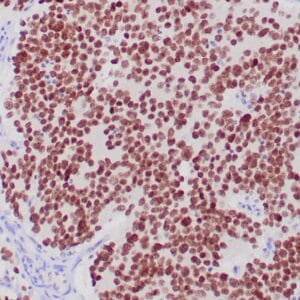
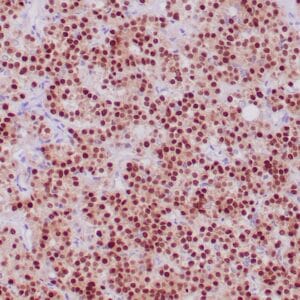
Reviews
There are no reviews yet.